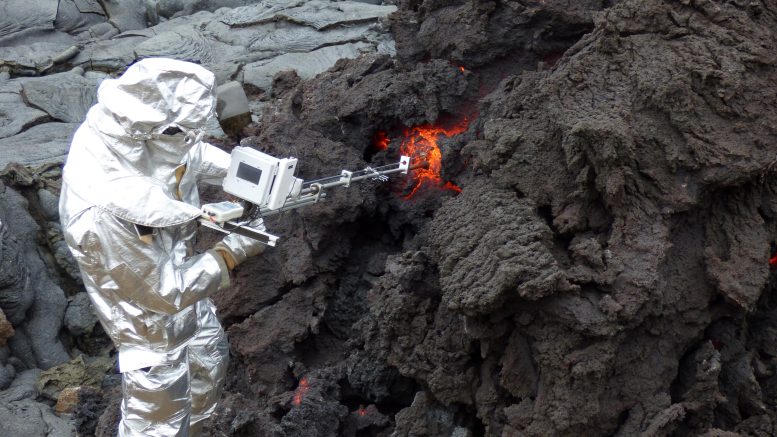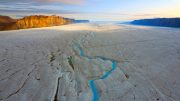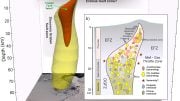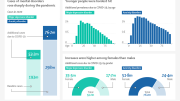
A new instrument for measuring lava viscosity could revolutionize how scientists predict and respond to volcanic eruptions by providing more accurate data from the field. Credit: SciTechDaily.com
Researchers at the University at Buffalo developed a new tool to measure lava viscosity directly in volcanic environments, enhancing our understanding of lava flows and improving disaster response strategies.
Millions of people live near active volcanoes, which are constantly monitored for signs of an impending eruption. When an eruption happens, scientists and governments rely on data to estimate the extent of the possible damage, informing evacuation plans and disaster response efforts. Unfortunately, the unpredictable nature of eruptions often makes data collection as challenging as coordinating a response.
Advancements in Lava Viscosity Measurement
Researchers from the University at Buffalo developed a tool for measuring the viscosity of lava that could increase our understanding of molten rock as well as better improve models of its movement, giving authorities crucial guidance for keeping people safe. Their research is detailed in Review of Scientific Instruments, by AIP Publishing.
For fluids like lava, viscosity is the measurement of how fast it flows. A low-viscosity fluid flows fast like water, while a viscous fluid acts more like molasses. When a volcano erupts close to human structures, viscosity measurements tell first responders how much time they have to react, and current methods are often insufficient.

In a field test of their instrument, University at Buffalo researchers gathered viscosity data from lava flows at the Litli-Hrútur eruption in Iceland. Credit: Martin Harris
Challenges in Viscosity Measurement
“In places like Iceland or Hawaii that have pretty frequent lava eruptions that impact infrastructure like roads and communities, there is uncertainty involved with the estimation of where the lava may travel and how quickly it may go there,” said author Martin Harris.
The issue, according to Harris, is that viscosity measurements are almost always conducted in a lab. This makes the experiments easier and safer, but a key piece is always missing.
“When lava erupts from a volcano, a lot of different gases are trapped as bubbles within the lava,” said Harris. “When we do measurements in the lab, we cannot put the gas back in. So, what we measure is a representation of the lava without all the different components, and we miss something that influences how the lava can flow.”
Field Measurements and Instrument Design
The only solution is to take measurements in the field. This, however, comes with its own set of challenges. Field viscosity measurements on lava date back nearly a century without much success. Many past attempts have featured metal rods inserted into lava, pushed by hand or by spring-loaded piston, or even fired into the lava like a spear, to estimate the viscosity of the flow.
The University at Buffalo team kept the classic metal rod and attached it to a force gauge for accurate measurements. They coupled it with a second rod to measure displacement and designed the entire instrument to be both lightweight enough to be hand-held and durable enough to hold up in a volcanic environment.
Field Testing and Future Goals
After finishing the device, the team tested it on a trip to an active volcano in Iceland.
“We spent almost two weeks accessing different locations around the Litli-Hrútur eruption,” said Harris. “It was a lot of very long hours in a pretty intense environment, but I think in the end, we were all really impressed and satisfied with the work that we were able to do.”
In their field trial, the researchers collected dozens of measurements of the lava in different locations and at different times. This type of data is crucial, they say, as it shows not just what the lava is like in a single moment but how it evolves as it spreads and cools.
“It was the first time that people have done these measurements across these different transects of the lavas,” said Harris. “The really exciting thing about this instrument is that we were able to show this change in the physical properties of the lava with time and space.”
The team hopes to further refine their instrument and make it available to research groups and monitoring stations at volcanoes around the world.
Reference: “A new portable penetrometer for measuring the viscosity of active lava” by M. A. Harris, S. Kolzenburg, I. Sonder and M. O. Chevrel, 4 June 2024, Review of Scientific Instruments.
DOI: 10.1063/5.0206776









Be the first to comment on "Revolutionizing Volcano Monitoring With New Lava Viscosity Tool"